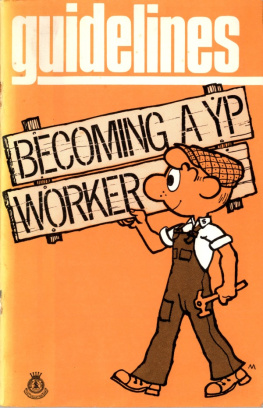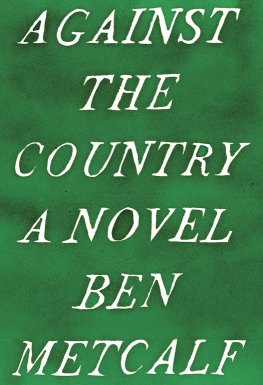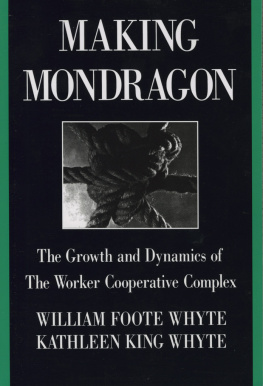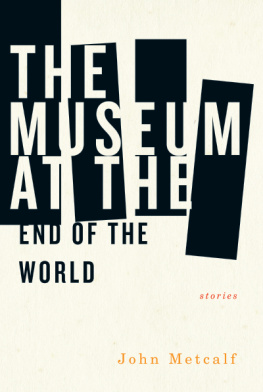William Metcalf - Guidelines for Becoming a YP Worker
Here you can read online William Metcalf - Guidelines for Becoming a YP Worker full text of the book (entire story) in english for free. Download pdf and epub, get meaning, cover and reviews about this ebook. publisher: The Salvation Army, genre: Children. Description of the work, (preface) as well as reviews are available. Best literature library LitArk.com created for fans of good reading and offers a wide selection of genres:
Romance novel
Science fiction
Adventure
Detective
Science
History
Home and family
Prose
Art
Politics
Computer
Non-fiction
Religion
Business
Children
Humor
Choose a favorite category and find really read worthwhile books. Enjoy immersion in the world of imagination, feel the emotions of the characters or learn something new for yourself, make an fascinating discovery.
- Book:Guidelines for Becoming a YP Worker
- Author:
- Publisher:The Salvation Army
- Genre:
- Rating:5 / 5
- Favourites:Add to favourites
- Your mark:
- 100
- 1
- 2
- 3
- 4
- 5
Guidelines for Becoming a YP Worker: summary, description and annotation
We offer to read an annotation, description, summary or preface (depends on what the author of the book "Guidelines for Becoming a YP Worker" wrote himself). If you haven't found the necessary information about the book — write in the comments, we will try to find it.
Guidelines for Becoming a YP Worker — read online for free the complete book (whole text) full work
Below is the text of the book, divided by pages. System saving the place of the last page read, allows you to conveniently read the book "Guidelines for Becoming a YP Worker" online for free, without having to search again every time where you left off. Put a bookmark, and you can go to the page where you finished reading at any time.
Font size:
Interval:
Bookmark:
In Chapter 4, we looked at children as if they were some form of raw material out of which youth workers, the craftsmen, sought to help create mature adults. That chapter assumed the one great obvious fact about children they change! Between the helplessness of a new-born baby and the confidence of that same 'baby' going off to his first day's work lies a whole chain of phases, crises, adjustments, developments. The fact is such an obvious one that we may not even think it worth analysing. Physically, the changes are there for all to see; and we know that changes of personality are no less real, even though they are harder to measure and assess.

It is the very obviousness of change that makes many youth workers impatient with the attempts of child psychologists and the like to break down the total development of a child into its separate parts, and give each part a name and a description. 'You keep trying to split a kid into phases, phobias, complexes, or what have you; I'll just carry on trying to make him a whole person!' Such is the unspoken attitude, and it is an attitude which has some authority. Many 'child experts' do not get on all that well with actual children; many a quiet worker, untrained except in loving, ignores all the 'rules' and wins her way into the hearts of children.
To such workers, the development of a child is as natural and inevitable as the rising of the sun. Both events happen in any case, so why analyse them? Simply marvel, and appreciate. But then, of course, if everyone had taken this attitude to the sun, no one would have woken up to the fact that actually the sun does not rise; we do! What a radical change that piece of informed observation brought about, not only in men's theories but ultimately in their actions. And at the artistic end of the scale, anyone wishing to transfer his view of that sunrise on to paper as faithfully as possible, would soon be giving it far more attention than the average man.
He would be seeing how the colours blend, what is the true progression from dark to light, what the cloud formations really look like. Similarly, all for different reasons, the photographer, the ship's captain and the shepherd are all busy analysing the details of that developing change we call sunrise.
The parallel should be clear. We must be grateful that many people have brought their informed observation to bear on the child, even though most of us prefer to accept him just as he is. Without their studies, the 'average' child may well have developed satisfactorily, but thousands of children with deep-seated problems far out of sight of even the people they live with, have been helped through to normality because someone bothered to take to pieces what had always been accepted as a whole. So this study exists for those who respect the need for a systematic enquiry into that most natural of all processes the growth from childhood to manhood.

The great danger of not giving sufficient thought to this matter is that we come to expect too much of a child too soon. This is a mistake that is much less often made in the physical development of children. We see clearly that the toddler is still toddling, so will not invite him on a sponsored walk. There is a clear limit to his capacity to lift weights, reach objects on a shelf and so on. We automatically respect these limitations, and when we do not respect them, then the child visibly wilts under the strain put upon him. The case for studying the inner personality growth of the child can therefore be stated simply it avoids the adult placing too much strain on the child too soon. In fact, we have in English an idiom which admirably links the physical growth of children with this personality growth: 'Trying to put old heads on young shoulders.' The result top-heaviness.
It is this slow, hidden development of children which, when wrongly estimated, gives rise to the frequent misunderstanding between young and old. What is more, adults must take the blame for the misunderstanding, being the maturer group, even though the younger group seems to be the cause of it! Failure to recognize that children's personalities develop only slowly, like their bodies, gives rise to all kinds of practical problems:
- We demand attention, without giving the children anything really compelling to attend to.
- We ask for stillness, when the child is still at the stage where it is most natural to wriggle.
- We expect a loyalty to duty and a continuity of interest which even many adults cannot sustain.
- We fail to repeat new information enough, give clear instructions patiently enough.
To sum up, the first need is to recognize that a child cannot attempt some forms of human behaviour until he is mentally and emotionally equipped for them. The second need is to spend a little more time in studying how he gradually becomes so equipped.
Guidelines on Child Development gives a chance to study the development of children at a greater depth. At this point, let us just look at the main recognized stages through which the normal child passes. Each stage of inner growth makes itself apparent in certain kinds of conduct and reaction which are entirely natural at that stage. That does not mean they are inevitable. For instance, 'teenage tantrums' are by no means obligatory, and many young people pass to adulthood without them. Nonetheless, there is an understandable reason why tantrums do come at this particular stage in life. The following extract, from a pamphlet issued by the youth department of the New Zealand Territory, summarizes these phases and their characteristics:
INFANCY/TODDLERHOOD
Home is very much the child's world at this stage. He is reaching out to touch, taste, hear, see and smell any object within his grasp or within crawling distance. Early play may appear rather random and meaningless to an adult but as the child progresses into toddlerhood more purpose can be observed in his exploration of the environment and relationships with others in the household.
EARLY CHILDHOOD
Friends in the neighbourhood become quite important. Spoken vocabulary broadens as the child's thinking processes enable greater understanding of how to label and classify objects and feelings. Through play, home and neighbourhood experiences the child is learning more about relationships. The child grows rapidly and his sense of curiosity and wonder aids his understanding of the physical world.
MIDDLE CHILDHOOD
This is the time when the 'gappy' smile appears. Physical growth is less pronounced and the development of skills such as ball games, swimming, reading and writing is of vital importance. The child's thinking processes continue to relate to concrete situations and the reasons for safety rules and the limits on behaviour set by adults are still not fully understood.
LATE CHILDHOOD
This is a crucial stage in the child's development because the pre-adolescent growth spurt often leads adults to expect more of the child than he may be capable of. This is the time when collections of objects and friends through neighbourhood and school play groups is very important to the child. Childhood interests and the desire for knowledge and skills are at their height without the storms of adolescence.

Font size:
Interval:
Bookmark:
Similar books «Guidelines for Becoming a YP Worker»
Look at similar books to Guidelines for Becoming a YP Worker. We have selected literature similar in name and meaning in the hope of providing readers with more options to find new, interesting, not yet read works.
Discussion, reviews of the book Guidelines for Becoming a YP Worker and just readers' own opinions. Leave your comments, write what you think about the work, its meaning or the main characters. Specify what exactly you liked and what you didn't like, and why you think so.









